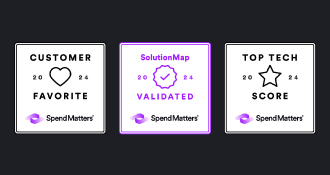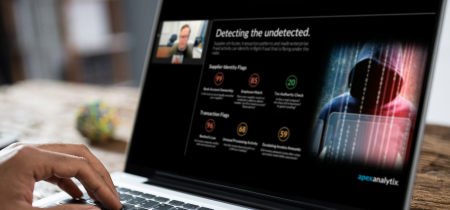The demand for environmental, social corporate governance has grown to the point of simply being a business requirement. From above, governments are passing new regulations to control greenhouse gas emissions and weed out forced labor from supply chains on what almost seems like a daily basis. From below, the market and broader public expect businesses to, as Spend Matters senior analyst Bertrand Maltaverne likes to say, “not just be the best in the world, but the best for the world.”
What remains, however, is the question of how one actually demonstrates this. Here, Bertrand turned to talk to Danny Thompson, the SVP of Market and Product Strategy for apexanalytix, and Alan Lee, the company’s EVP and general manager of apexESG Enterprise. Historically, apexanalytix was an SxM that dealt with financial risk and fraud detection. But in March, it acquired ESG Enterprise, a powerful ESG reporting tool that can calculate climate-related risk data and deliver actionable insights, and hired Alan Lee, who previously served as ESG Enterprise’s CEO. The three gathered to discuss the business goals involved in ESG.
Listen to the conversation here, then read on for a deep dive.
Your disclosure is a tool
The conversation began with listing the different regulations from different groups companies can expect to face these days. Obviously, businesses will want to comply — or at least not be fined. But, as Bertrand noted, there is the temptation to engage in greenwashing, and this temptation may make regulators and the general public more cynical about any ESG measures a company may report.
Lee agreed, stating many customers have asked him how they should address this disbelief. “Our answer’s always been to follow the industry best practices,” he said, “which is to use the disclosure as a tool to disclose accurate and verifiable and auditable measurements to the consumers and to their customers.” But being open works both ways; one must both share information and allow others to verify it. So, a company should pursue the opportunity to have that information verified or audited by a third party. That way, its ESG claims can command confidence and credibility, and the company can avoid charges of greenwashing.
Relying on a disclosure presents a second underlying question though. “How,” Lee asked, “do you know what they put in the questionnaire is true and accurate?” All the expertise in the world will not decarbonize a supply chain if the facts of that supply chain remain hidden. “Because if the large number of suppliers involved,” he continued, “it is neither practical nor cost effective for a company to develop an accurate picture of its supply chain’s ESG factors itself. It needs a partner to help it automate the whole system from beginning to end.” To address this, apexanalytix collects evidence from the supplier, validates the claims the supplier made and presents the buying organization with a true view of its supply chain. Tackling the need to clear ESG data has become its own business model with its own approach and technology.
The right technology applies to all
As Lee noted, a company cannot track everything itself. “Throughout our conversations with Fortune 500 companies, typically the challenges are that they have so many suppliers that they cannot measure and analyze,” he said. The simple solution is to have an automated tool that collects, measures and analyzes these data points.
But what does that tool look like? Bertrand said in the beginning “Almost every month sees new regulations coming and covering new areas. It starts to be very tricky for organizations to understand exactly what the scope is, am I in scope, what should I do, et cetera.” Later, Thompson stated that while there are companies who are aggressively proactive in their sustainability programs, there are others who are simply reacting to the need to comply with regulations and protect their reputations. Presumably, that complex landscape of demands translates to a complex array of ESG solutions.
But, as Thompson continued, that is a misapprehension: “The right technology applies to all of these global compliance rules and identifies reputational risks anywhere in the supply chain, whether it’s during supplier discovery, pre-qualification, supplier onboarding, or continuously after that.” One major issue with risk assessments is that companies treat various kinds of risks as discrete silos. “That’s created this opportunity for unexpected disruptions when your IT provider has great cybersecurity,” he explained, “but then they fall to a financial crisis or another supplier that’s providing goods becomes subject to a ransomware attack.” To treat supplier risk and the compliance issues that come with including outside parties in a supply chain, a solution needs to gather a disparate set of rules into a single actionable perspective.





